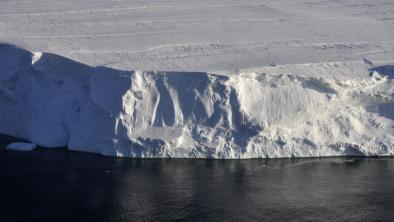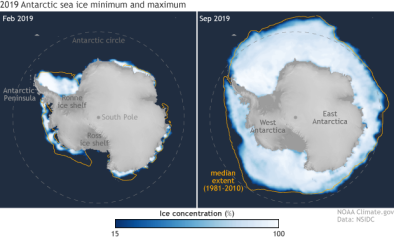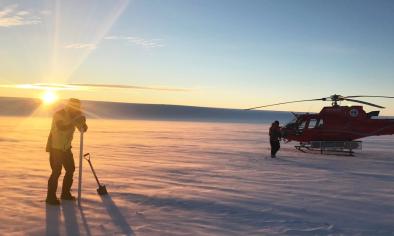Science Source
January 2016 extensive summer melt in West Antarctica favoured by strong El Niño
- States that over the past two decades the primary driver of mass loss from the West Antarctic Ice Sheet (WAIS) has been warm ocean water underneath coastal ice shelves, not a warmer atmosphere; yet, surface melt occurs sporadically over low-lying areas of the WAIS and is not fully understood
- Reports on an episode of extensive and prolonged surface melting observed in the Ross Sea sector of the WAIS in January 2016
- Finds that a comprehensive cloud and radiation experiment at the WAIS ice divide, downwind of the melt region, provided detailed insight into the physical processes at play during the event
- Finds that the unusual extent and duration of the melting are linked to strong and sustained advection of warm marine air toward the area, likely favoured by the concurrent strong El Niño event
- Concludes that the increase in the number of extreme El Niño events projected for the twenty-first century could expose the WAIS to more frequent major melt events
Related Content
Headline

Jan 29, 2020 | BBC News
Journey to the 'doomsday glacier'
Headline

Nov 22, 2019 | NOAA Climate.gov
Understanding climate: Antarctic sea ice extent
Headline

Mar 26, 2019 | The Guardian
Australian researchers find huge lakes beneath largest east Antarctic glacier
Science Source
| Geophysical Research Letters
Mass Loss of Totten and Moscow University Glaciers, East Antarctica, Using Regionally Optimized GRACE Mascons
Yara Mohajerani, Isabella Velicogna, Eric Rignot


